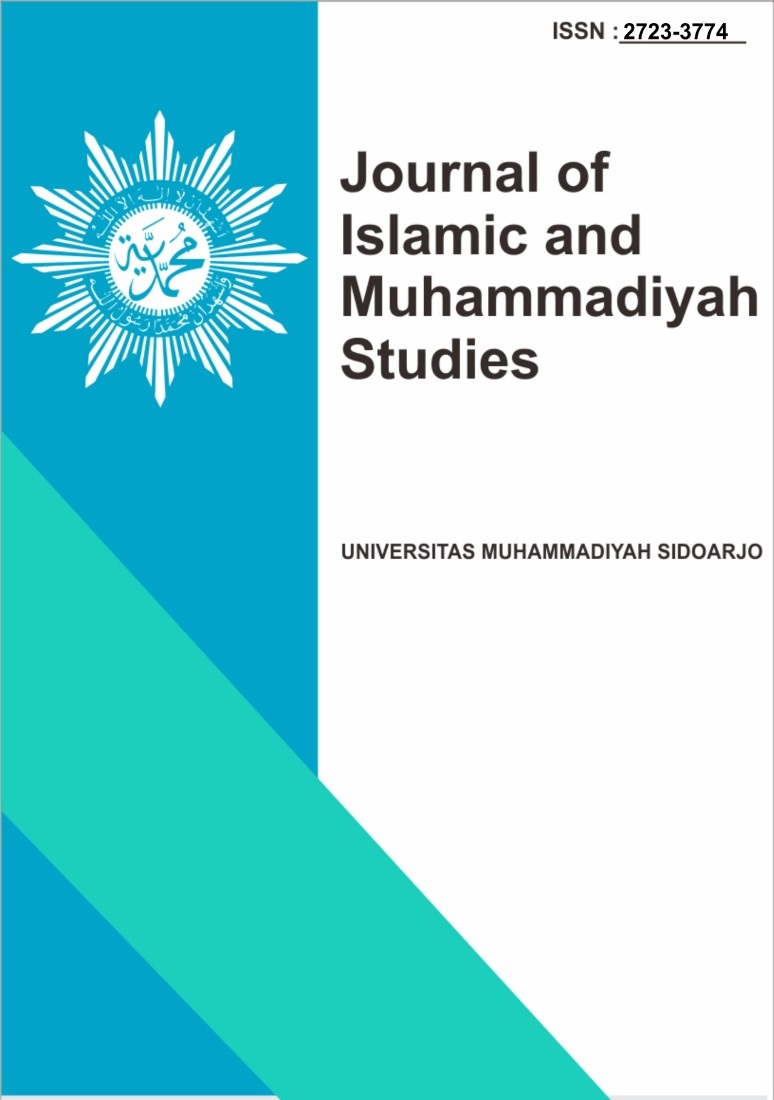Teacher-Student Relationship and Learning Motivation at SMP Muhammadiyah 5 Tulangan
Hubungan Guru-Murid dan Motivasi Belajar di SMP Muhammadiyah 5 Tulangan
DOI:
https://doi.org/10.21070/jims.v7i1.1639Keywords:
Teacher-Student Relationship, Learning Motivation, Correlational Study, Junior High School, Muhammadiyah EducationAbstract
General background: Motivation is a crucial factor influencing student learning outcomes, as it drives persistence and engagement in the classroom. Specific background: In Muhammadiyah schools, teacher-student relationships are assumed to play a central role in shaping students’ motivation, yet empirical evidence remains limited. Knowledge gap: While previous studies have explored external factors such as family or environment, fewer have examined how teacher-student relational quality contributes directly to students’ learning motivation in the Muhammadiyah context. Aims: This study investigates the relationship between teacher-student relationships and learning motivation among students at SMP Muhammadiyah 5 Tulangan. Results: Using a quantitative correlational design with 200 students selected from 338 through Slovin’s formula, data were collected via Likert-scale instruments and analyzed with Product Moment correlation. Normality and linearity tests met statistical assumptions, and the correlation analysis revealed a positive though weak association (r = 0.178, p < 0.05), with teacher-student relations explaining 3.2% of learning motivation variance. Novelty: The study expands prior research by situating the relational dynamics within Muhammadiyah education, offering insight into a psychosocial variable not often highlighted. Implications: Strengthening teacher-student relationships may serve as a practical pathway for fostering sustainable learning motivation in Islamic-based schooling.
Highlights:
-
Teacher-student relationship shows a positive correlation with motivation.
-
Relational quality explains a small yet meaningful portion of variance.
-
Novel contribution within Muhammadiyah educational settings.
Keywords: Teacher-Student Relationship; Learning Motivation; Correlational Study; Junior High School; Muhammadiyah Education
References
S. A. M. (2011). Interaksi dan motivasi belajar mengajar. Jakarta: PT Raja Grafindo Persada.
Wlodkowski, R., & Jaynes, J. (2004). Motivasi belajar. Depok: Pustaka.
Suprihatin, S. (2015). Upaya guru dalam meningkatkan motivasi belajar siswa. Jurnal Pendidikan Ekonomi UM Metro, 3, 73–82.
Nashar. (2004). Motivasi belajar. Jakarta: Delia Press.
Hamdu, G., & Agustina, L. (2011). Pengaruh motivasi belajar siswa terhadap prestasi belajar IPA di sekolah dasar. Jurnal Penelitian Pendidikan, 12(1), 25–33.
Pongoh, F. D. (2023). Faktor yang mempengaruhi motivasi belajar pendidikan agama Kristen. Paedagoria: Jurnal Kajian, Penelitian dan Pengembangan Kependidikan, 6356. Retrieved from http://journal.ummat.ac.id/index.php/paedagoria/article/view/11826
Che Ahmad, C. N., Shaharim, S. A., & Abdullah, M. F. N. L. (2017). Teacher-student interactions, learning commitment, learning environment and their relationship with student learning comfort. Journal of Turkish Science Education, 14(1), 57–72. https://doi.org/10.12973/tused.10190a
Baker, J. A. (2006). Teacher-student relationships and students’ academic and behavioral adjustment. Journal of School Psychology, 44(3), 211–229.
Cholilalah, A. I. H., & Arifin, R. (1967). Teacher–student relationship climate and school outcomes: Implications for educational policy initiatives. Angewandte Chemie International Edition, 6(11), 951–952.
Koca, F. (2016). Assessing child-teacher relationships: A review study. International Journal of Social Sciences and Educational Studies, 2(1), 96–119.
L. G. W., & B. K. B. (2001). Charting the relationship trajectories of aggressive, withdrawn, and aggressive/withdrawn children during early grade school. Developmental Psychology, 37(2), 293–310.
D. M. S. U. (2021). Hubungan relasi guru siswa dengan motivasi belajar matematika di SMP X Surabaya. Universitas Surabaya Repository. Retrieved from http://repository.ubaya.ac.id
Azra, F., & Jamil, H. (2015). Pengaruh lingkungan keluarga dan motivasi belajar siswa terhadap hasil belajar akuntansi siswa kelas X SMK Negeri 1 Solok Selatan. Jurnal Pendidikan. Retrieved from http://ejournal.upgrisba.ac.id
Arum, D., & Riza, N. K. (2021). Hubungan antara kontrol diri dengan perilaku konsumtif pada mahasiswa psikologi pengguna e-commerce Shopee. Jurnal Penelitian Psikologi, 8, 92–102. Retrieved from https://ejournal.unesa.ac.id/index.php/character/article/view/42541
Permatasari, L. P. (2016). Pengaruh sikap, norma subjektif, dan kontrol perilaku terhadap intensi berhenti merokok sebagai dampak peraturan gambar peringatan. Jurnal Ilmiah Mahasiswa FEB, 1689–1699.
Sugiyono. (2014). Metode penelitian kuantitatif, kualitatif, dan RnD. Yogyakarta: Alfabeta.
P. R. C. (2001). Student-Teacher Relationship Scale-Short Form. Lutz, FL: Psychological Assessment Resources Inc.
Pianta, R. C., & Steinberg, M. (1992). Teacher-child relationships and the process of adjusting to school. New Directions for Child and Adolescent Development, 57, 61–80.
Pianta, R. C., Steinberg, M. S., & Rollins, K. B. (1995). The first two years of school: Teacher-child relationships and deflections in children’s classroom adjustment. Development and Psychopathology, 7(2), 295–312.
Nasrah, & Muafiah, A. (2020). Analisis motivasi belajar dan hasil belajar dari mahasiswa pada masa pandemi Covid-19. Jurnal Riset Pendidikan Dasar, 2(1), 1–10.
Hidayat, T. A., & Sugiyono, S. (2017). The effect of capital structure, dividend policy, profitability on firm value in manufacturing companies. Jurnal Ilmu dan Riset Manajemen, 6(5), 1689–1699.
Sari, F. M., & Harini, E. (2015). Hubungan persepsi siswa terhadap mata pelajaran matematika, minat belajar dan kemandirian belajar dengan hasil belajar matematika. UNION: Jurnal Ilmiah Pendidikan Matematika, 3(1), 61–68. https://doi.org/10.30738/.v3i1.280
Anggraini, A. M. Y., & Syaf, A. (2017). Hubungan antara berpikir positif dengan kecemasan komunikasi pada mahasiswa. Psychopolytan: Jurnal Psikologi, 1(1), 31–38.
Hapsari, P. N. F., Rahmawati, A., & Jumiatmoko, J. (2020). Hubungan antara relasi guru-anak dengan kemampuan keaksaraan anak usia 5–6 tahun. Kumara Cendekia, 8(3), 253–261. https://doi.org/10.20961/kc.v8i3.42603
Mamang, E., Danardana, M., Imanuel, H., & Hetti, R. (2021). Motivasi berprestasi siswa di sekolah, bagaimana peran relasi guru dan siswa? Jurnal Psikologi Pendidikan, 19(2), 1047–1056.
Downloads
Published
How to Cite
Issue
Section
License
Copyright (c) 2025 Noval Budi Hariyanto, Eko Hardi Ansyah

This work is licensed under a Creative Commons Attribution 4.0 International License.
Authors retain copyright and grant the journal right of first publication with the work simultaneously licensed under a Creative Commons Attribution 4.0 International License that allows others to share the work with an acknowledgement of the work's authorship and initial publication in this journal.






